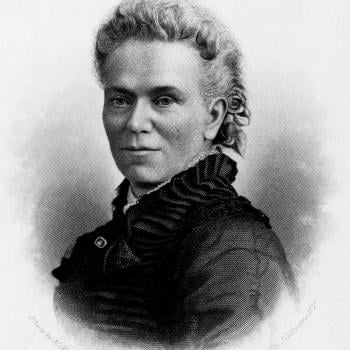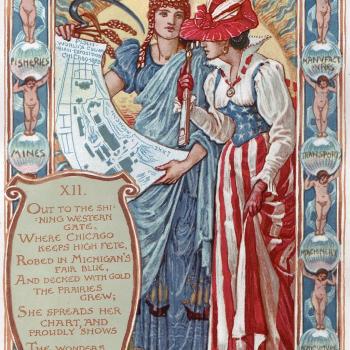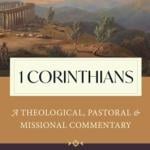I have been writing about the Old Testament book of Zechariah and where it stands in relation to the apocalyptic tradition, no less than to prophecy. Zechariah – and especially the final chapters, Deutero-Zechariah – were a huge influence on apocalyptic, and that is nowhere more clear than in the New Testament Book of Revelation. The closer we look at Zechariah, the clearer we see its role in early Christian thought.
I say immediately that my comments here are anything but path-breaking. Among many other works, see the excellent book by Marko Jauhiainen, The Use of Zechariah in Revelation (Mohr Siebeck, 2005). Jauhiainen sees far fewer connections between the books than do some writers, but even so, the impact is significant.
Most straightforward among these influences is Zechariah’s apocalyptic tone, in the conventional sense of that word. The book ends with a vision of Judgment and divine intervention into the world, from which would emerge a radically transformed and purified new order. Superficial resemblances are many, including the great war of the End Times, when all the armies will march on Jerusalem, and God will step in at the very moment of apparent defeat and conquest. So ruinous would the wars be that salvation would only be granted to a remnant of the people: “In the whole land, says the Lord, two-thirds shall be cut off and perish, and one-third shall be left alive.” (Zechariah 13:8). No less familiar is the vision of the New World:
On that day there shall be neither cold nor frost. And there shall be continuous day (it is known to the Lord), not day and not night, for at evening time there shall be light. On that day living waters shall flow out from Jerusalem, half of them to the eastern sea and half of them to the western sea; it shall continue in summer as in winter. (Zech. 14.6-8 RSVCE).
We also see the fountain that will open to cleanse God’s people of their sins.
Along the way, we find several other later familiar themes and devices. The opening two chapters of Zechariah are densely packed with foretastes of Revelation, including such old friends as the four variously colored horses, in this case sent by God to patrol the earth. That leads into an angel casting a measuring line over Jerusalem (compare Rev. 11.1). Then, looking forward to Daniel, we see four horns, symbolizing the nations that had conquered and scattered God’s people.
I have already stressed the close parallels between the formats of the two books, and the role of the Interpreting Angel. Also parallel is the role of mysterious writings or heavenly scrolls, which demand interpretation (Zech. 5).
Another parallel is that in both instances, God’s faithful servants actually contribute to provoking the judgment by public actions that highlight the evils of the present order. We think of the Two Witnesses in Revelation, or the Unworthy Shepherd in Zechariah. The Shepherd provokes his own death, the act that brings on God’s final actions. Revelation’s description of the Two Witnesses as two olive trees or lampstands/candlesticks is a direct recollection of an exceedingly influential passage in Zech 4. By the second century BC, that same passage was being read in messianic ways, and helped shape the idea of dual messiahs (kingly and priestly) that was held at Qumran.
The other core theme of Zechariah is deception and masquerade, which is also such a central idea in the Book of Revelation – nothing is quite what it seems, and believers must struggle at all costs to avoid deception by the forces of evil. The whole theme of Deutero-Zechariah is that of role-playing, in which (with noble ends) a pious prophet plays the part of a sinful Unworthy Shepherd, and successfully deceives the world.
One of the book’s odder passages (and that is saying something) is Zech. 13.2-6, where the prophet imagines a purified world without idols and – curiously – without prophets. This is sometimes taken to reflect a belief in the disappearance of prophecy as such, but it almost certainly represents a condemnation of lying and deceptive prophets. “On that day every prophet will be ashamed of his vision when he prophesies; he will not put on a hairy mantle in order to deceive.” In God’s new world, not only will such rogues not prophesy, but they will deny that they ever had any such gifts. They will only show the (literal) scars they received from beatings inflicted to punish their lies.
Other incidental parallels also occur, especially the deep suspicion of commerce in all its forms – of buying and selling of all kinds, which goes to its logical extreme in trafficking in human beings. According to some translations, the book’s last verse looks forward to a time when “there shall no longer be a trader in the house of the Lord of hosts on that day.” In such matters, Second Zechariah and John of Patmos had much in common in their attitudes.
In itself, none of these parallels urges us to consider direct influence, but taken together, the package is striking. Zechariah was laying out an apocalyptic agenda that many later writers would follow, well into Christian times.
Next time: angels, evil, Satan, and (just maybe) the Whore of Babylon.
For Zechariah’s cryptic last verse, and the powerful case that the word “Canaanite” should actually be read as “trader” or merchant, see for example Alan Kerr, The Temple of Jesus’ Body (A&C Black, 2002).












